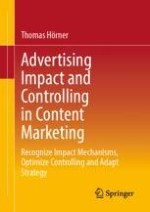2023 | OriginalPaper | Buchkapitel
8. Designing Effective Content Marketing Posts
verfasst von : Thomas Hörner
Erschienen in: Advertising Impact and Controlling in Content Marketing
Verlag: Springer Fachmedien Wiesbaden
Aktivieren Sie unsere intelligente Suche, um passende Fachinhalte oder Patente zu finden.
Wählen Sie Textabschnitte aus um mit Künstlicher Intelligenz passenden Patente zu finden. powered by
Markieren Sie Textabschnitte, um KI-gestützt weitere passende Inhalte zu finden. powered by
